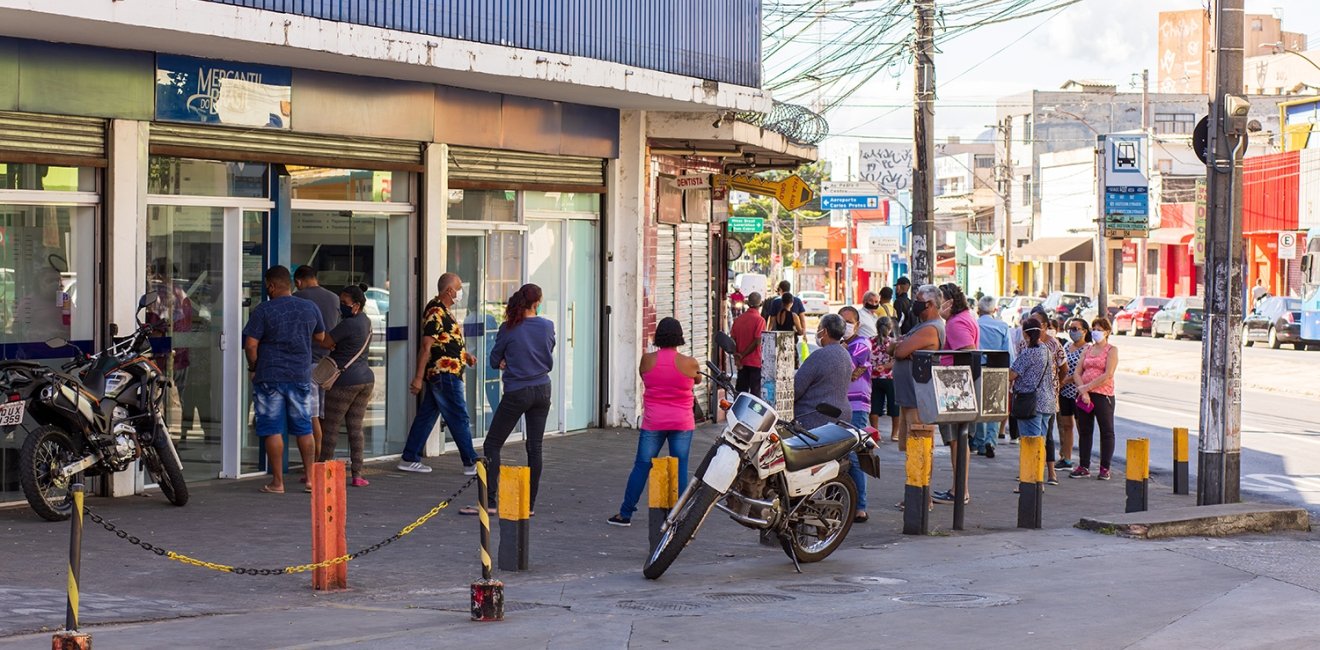
A blog of the Brazil Institute
The global economic crisis sparked by the COVID-19 pandemic has one peculiar characteristic: unlike previous recessions, in which women entered the workforce in greater numbers in response to the economic downturn, the current crisis has seen women pushed out of employment.
Nicknamed the “shecession,” the first five months of the pandemic in Brazil caused an increase in the disparity between men and women with regard to paid employment. On the one hand, jobs traditionally performed by female workers—such as childhood education and paid domestic work—have been drastically affected by social distancing measures and quarantines.
At the same time, the reduction in the availability of care services has left women overworked, as they are the demographic frequently responsible for caring for children, senior citizens, people with disabilities, and other individuals in need of care.
According to data from the National Household Sample Survey COVID-19 (PNAD COVID-19), from the Brazilian Institute of Geography and Statistics (IBGE), women make up 51.1 percent of the working-age population in Brazil. In May, 49.5 percent of the country’s unemployed and underemployed persons were women—in September, this rate rose to 51.9 percent.
At the same time, as women have become the majority among Brazil's unemployed, the difference between the employment rate of men and women grew from 5 percentage points to 7 percentage points.
Women in the Workforce: Left Out, and Kept Out
While we can see increased inequality in access to employment during the pandemic, when we analyze the population that is completely out of the workforce—those without paid jobs who are also not seeking employment—the situation is even starker. Women were already the majority of non-workers prior to COVID-19; but as of September, they represented 63 percent of the population outside of the labor force—and the figure is rising.
The reasons for this increase are likely to be pandemic-related. Indeed, with social distancing measures in place and companies less likely to hire, large numbers of unemployed Brazilians simply gave up their search for employment, not wanting to risk being infected by COVID-19 to apply for a job that, in all likelihood, was not there in the first place.
Many of these people are now returning to their job searches, which can be seen as Brazil's unemployment rate hit new records. But even this return to work—or the return to job searches—has not occurred equally between men and women.
Back in May, 18.6 percent of Brazil's employed persons were furloughed or otherwise on leave from work due to social distancing rules: 23.5 percent of female workers and 15 percent of male workers. Five months later, however, only 2.5 percent of the men had not yet returned to work, whereas 5.2 percent of the women had not been brought back.
After the long and unequal process of incorporating and integrating Brazilian women into the workforce, the COVID-19 pandemic has certainly been a setback. In this case, a long-held feminist argument appears to be true, that it takes but a single crisis for women’s rights to come under pressure.
Like the content? Subscribe to the Brazilian Report using the discount code BI-TBR20 to get 20 percent off any annual plan.

Author

Brazil Institute
The Brazil Institute—the only country-specific policy institution focused on Brazil in Washington—aims to deepen understanding of Brazil’s complex landscape and strengthen relations between Brazilian and US institutions across all sectors. Read more

Explore More in Brazil Builds
Browse Brazil Builds
They're Still Here: Brazil's unfinished reckoning with military impunity




